If you are thinking about adding Coneflowers (Echinacea sp. and cvs.) to your garden this spring, you might want to look at a recent report put out by the Mt. Cuba Center in Delaware. The Center has done extensive research with an eye to promoting the use of native plant varieties in American home gardens. Their evaluation of several dozen Coneflower species and cultivars is available online. The evaluation, conducted in 2019 and 2020, looked at each plant’s ability to attract pollinators as well as its horticultural performance.
A big caveat is that the plants in question received more moisture and grew in richer soil than you would find in the habitats of the original species, or in gardens in much of the country. Hence the report is entitled “Echinacea for the Mid-Atlantic Region”, and focuses a good deal on which plants achieve a compact habit that avoids flopping. All of the straight species in the evaluation tended to flop.
Closer to home, the Chicago Botanic Garden is also doing a Coneflower evaluation, but it is not yet complete. CBG has, however, done evaluations of dozens of plant genera, which make for fun reading on a rainy day.
In terms of attracting pollinators, the top 5 species/varieties in the Mt. Cuba Center report were:
- Purple Coneflower (E. purpurea) ‘Fragrant Angel’.
- Purple Coneflower (E. purpurea) straight species.
- Purple Coneflower (E. purpurea) ‘Ruby Star’.
- Hybrid Coneflower ‘Amazing Dream’.
- Hybrid Coneflower ‘Sensation Pink’.
As I’ve mentioned before, many native plant advocates are critical of using anything other than the straight species. Even so, it’s worth noting that a number of cultivars attracted nearly as many pollinator visits as the straight species (or, in the case of ‘Fragrant Angel’, slightly more).
If you want to read a really lively debate on this topic, check out this post from Benjamin Vogt’s Monarch Gardens – and be sure to read the comments.
Tell the truth, I have at times been appalled by some of the Echinacea cultivar introductions over the years, some of which have looked just awful in my opinion. In fact, I once proposed the creation of a Federal Echinacea Cultivar Control Board, but the idea did not gain traction. Now I will admit that a few of the cultivars from this genus are just a little bit tempting.
Anyhow, among the 15 plants most attractive to pollinators were 6 that received top marks for overall garden performance:
- Purple Coneflower ‘Fragrant Angel’.
- Purple Coneflower ‘Pico Bella’.
- Hybrid Coneflower ‘Raspberry’.
- Hybrid Coneflower ‘Sensation Pink’.
- Hybrid Coneflower ‘Postman’.
- Hybrid Coneflower ‘Growing Dream’.
The difference in value to pollinators is significant. The top 15 ecological performers, all single blooms, attracted an average of 69 pollinator visits. Double-flowered varieties, which tended to be among the worst performers, attracted an average of fewer than 9.
It’s been years since we grew any Echinacea in our own garden. We used to have lots of Purple Coneflower (the straight species), but eventually I had to pull them because they succumbed to Aster Yellows. Every now and then I think of giving them another try.
Certainly, the pollinators and goldfinches loved them, and so did I. They did have a tendency to grow too tall and flop in our rich soil, but the same can be said of a lot of our plants. Maybe I should try one of those compact cultivars like ‘Fragrant Angel’. Or maybe I’ll wait for the results of the Chicago Botanic Garden Echinacea evaluations. We’ll see.

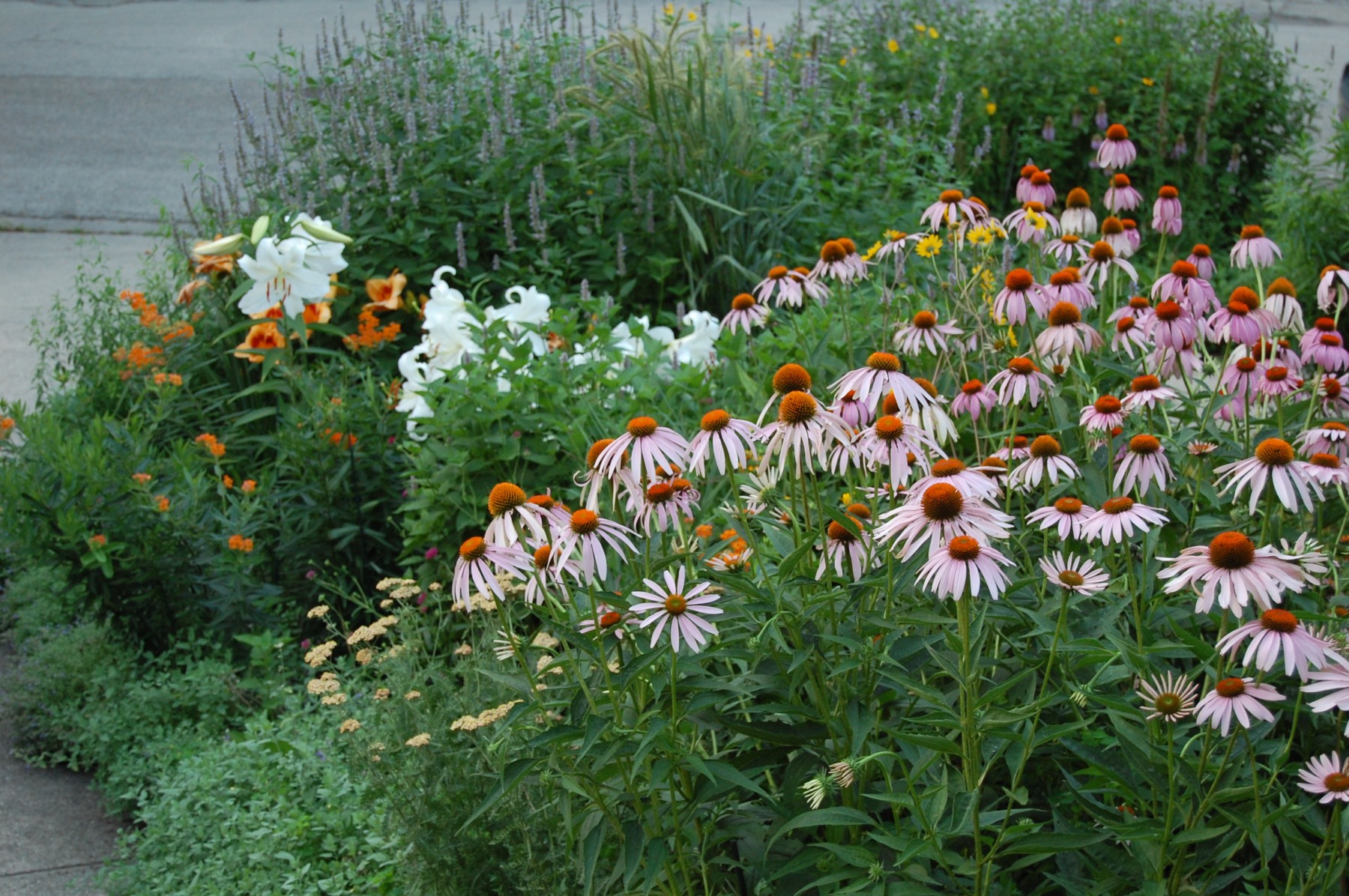

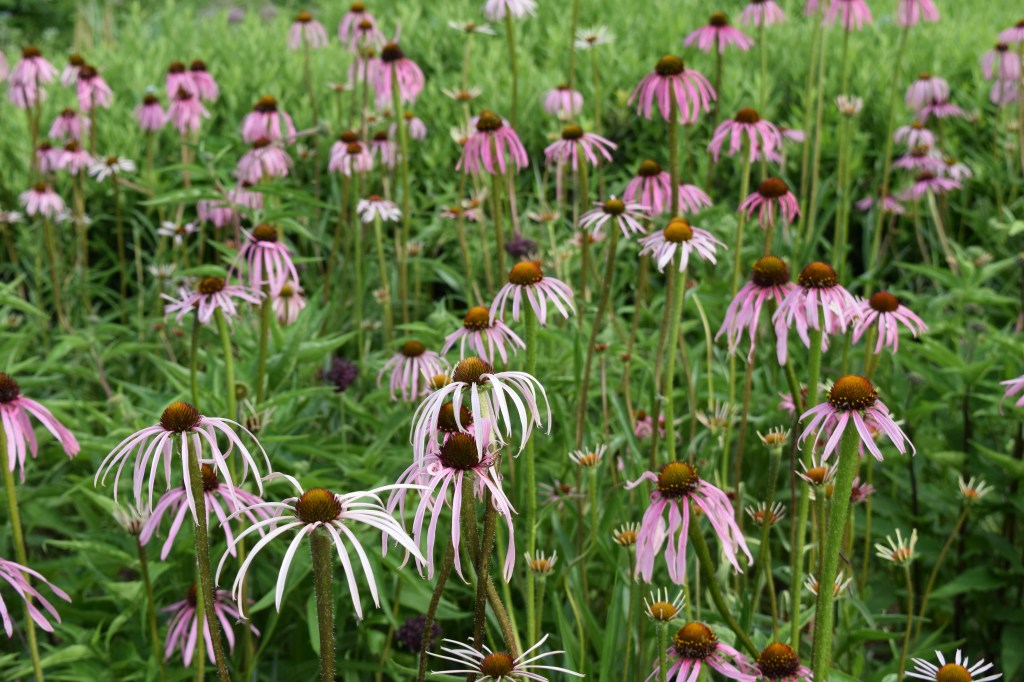
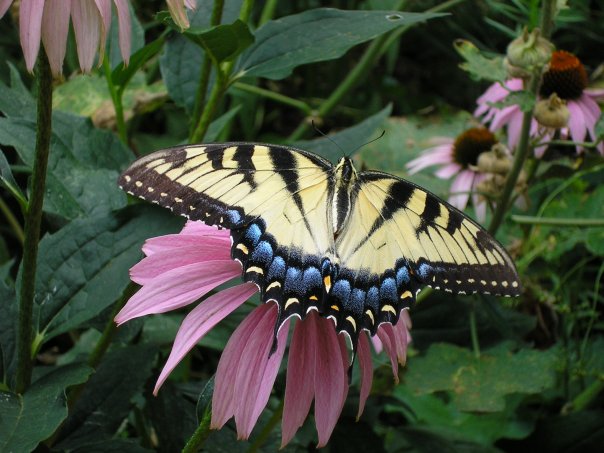
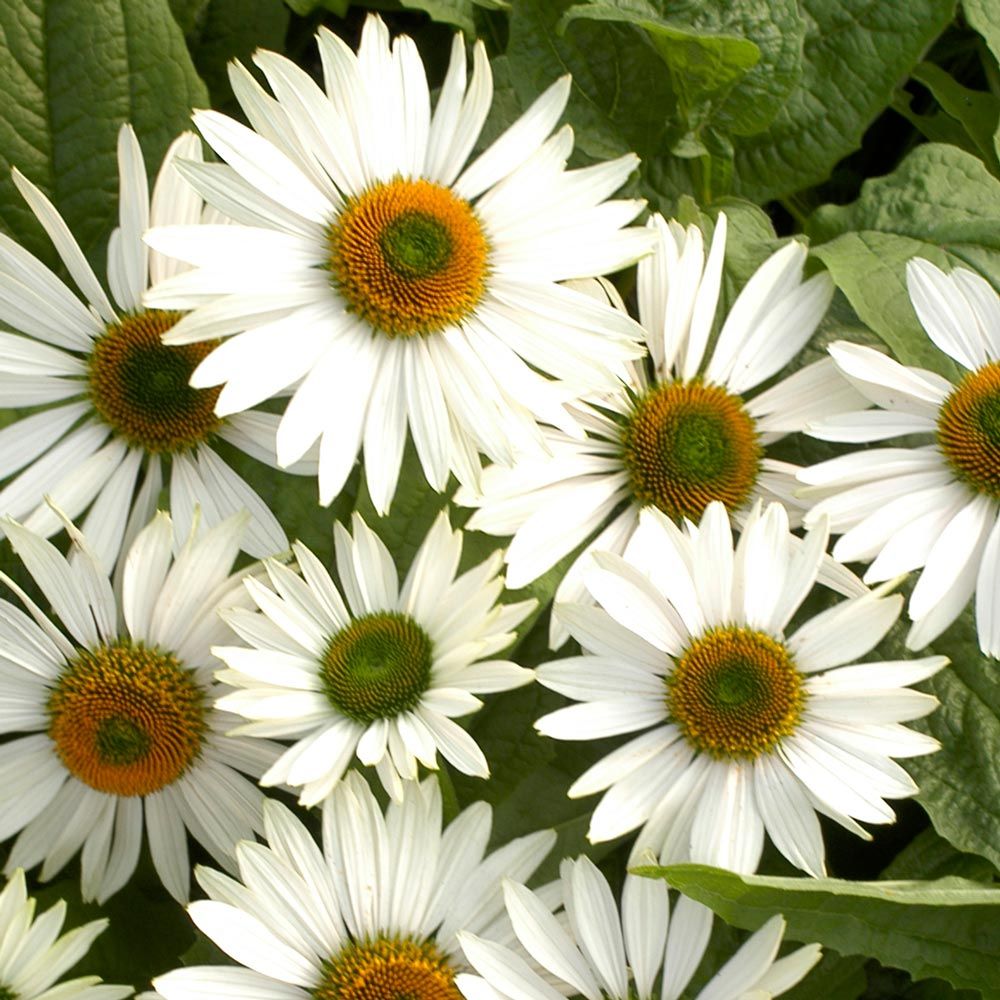



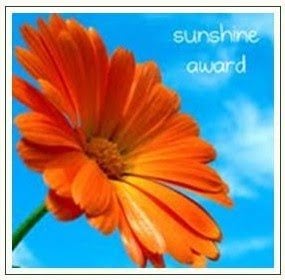
We have found that the new hybrids don’t like our wet winters here in the UK, they only seem to stay for one year except the straight species which can cope.
I’m a new subscriber and I just wanted to say that I enjoy your posts very much. I do a little happy dance when I see a new post. Thanks for sharing your knowledge and experience, and thanks to your wife for beautiful photos!
You’re welcome, and thanks for reading!
I had a lot of coneflowers, moved them to make drifts, and lost them all. I haven’t bought any new ones yet. You will smile when I tell you I have several six packs of mexican sunflowers under the lights though. 🙂
Yay for Tithonia!
Thank you! I am glad to know more about these. The finches are crazy about them. I have just two clumps and I don’t know what they are, but I do know shade is encroaching on them and I expect to hear them complain this summer.
Maybe they can move to a sunny spot?
Very possibly!
This is great to have an evaluation of different cultivars. I’ve noted “Fragrant Angel” on my wish list as I find that it is available over here. Amelia
The plants I have all came from one, which is so old I can’t even remember where I got it. I’d guess it was a straight species. I didn’t know they could be fragrant, but I’m not thrilled with the white varieties.
I have never had any luck with them. They last one season and disappear.
Good to know, thanks! I only have a few straight species E. purpurea, partially because my conditions (mostly shade) aren’t optimal for them. I have transplanted some and seeded some in recent years, and they do seem to perform OK in dappled sun, but I probably won’t buy anymore. But I do love them, and so do the pollinators. Great post, as always!
I tried growing them here, but also found I couldn’t get them to continue beyond a season or two.
Couldn’t get them to grow in my gardens. Wonderful picture of the butterfly!
Echinacea is a favourite of mine, so when I saw that report a couple of weeks ago, my interest was immediately piqued. I must admit that I have succumbed to growing several of the cultivars, and was quite surprised that so many of the “normal” ones (i.e. not those poofy centered types) were all over the map. While I do have several patches of the species, I do enjoy the cultivars such as Cheyenne Spirit and have a few packets of other varieties to try as well. P.S. Those CBG evaluations look interesting – thanks for the link…some rainy day reading indeed!
I have tried one of those fancy Cone Flowers. I ripped it out after a couple of years of not seeing one insect on it. Very disappointing. I enjoy reading those Mt Cuba reports too. I never think about the CBG reports. That is a little closer to home.
Excellent post! Just the information I was curious about- all right here. Great photos too!
“Echinacea Control Board” LOL, though I know what you mean. Thanks for all of this and noting the cultivars that are attractive to pollinators!
Great post, Jason! I’m a big fan of the Mt. Cuba plant trials, I keep lists of the best cultivars on my phone for when I go plant shopping.
‘Ruby Star’ has persisted in my garden for almost twenty years, grows tall but never flops, and is a bee and butterfly magnet. It has also self-seeded a bit, which I like, and comes true to seed. I was surprised that it wasn’t higher in the Mt. Cuba trials. I’ve killed every other echinacea that I’ve tried to grow. 😦
Doug Tallamy’s view on cultivars is that unless they have doubled flowers that hide the pollen and nectar or have a drastic change in foliage color, they are equally attractive to most insects as the species and easier to grow. That has been my experience too.
Good to know about ‘Ruby Star’.
This is quite interesting. I know I’m somewhat prejudiced against cultivars, but I’ve discovered that’s partly because some of the species on the market are just odd: so odd that any resemblance to the original plant is almost lost. I know there are multitudes of bees, flies, beetles, and skippers who are happy to have plants like the non-native wisteria around just now; plants like that are filling the void while our native flowers catch up post-freeze.
I have not had much luck with coneflower cultivars – they don’t seem to be very hardy. My soil is heavy clay, the straight specie grows in full sun and doesn’t flop. And yes, the goldfinch *love* them.
I grow the E. purpurea and E. angustifolia in heavy clay in Michigan. Both seem to do fine here and aren’t too floppy. When we bought this house three years ago, it came with some red and orange petal cultivars, and I definitely notice a difference in pollinator visits as there are almost none to those.
In addition to the finches, which love the native species, last fall there was a squirrel who would jump up from the ground to pull the seed heads down, gnaw the seed head off, and then take it away to bury it. I expect to find random coneflowers popping up in the lawn as a result from this sneaky gardener.
Not familiar with the E. angustifolia. I’ll have to look that one up. Those squirrels can be entertaining but annoying.
I was so happy to read this as I planted Fragrant Angel just two days ago! I also have Pico Bella. I do notice a difference in which are visited by pollinators more and as much as I loved the ‘Green Envy’ one I grew last year it was not as popular as the pink ones. (Lovely photo of the Swallowtail on yours). My gardening magazine reports on similar studies here for various plants and very often the results are that the old sorts (i.e.’straight species’) are the best.
Jason, thanks for this post and the varieties of coneflowers that attract pollinators. A few years ago, I had to rid my garden (and the others at which I volunteer) of the straight species because of an attack of asters yellow. My fellow volunteers and ire gradually readmitting coneflowers. You are always a good source of advice in these areas.
Hope the aster yellows stays away.
My love of Echinacea has only grown over the years. They are hardy, easy to grow, long lasting… I’ll have to check my tag collection to find out if they are on any of the lists you provided. I only know the blooms are singles and I added 4 more last fall. I can only hope pollinators love them as much as I do.
I’d add the straight species back to the garden! The newer cultivars are unreliable. I have loads of them in my garden. They’re one of my favorite flowers.
That is really interesting especially as I’ve just sown seeds for wildlife loving echinacea, pink, purple and white varieties. I hope our pollinators enjoy them, I know I will.xxx
Hello Jason, we’ve got a seed packed of Echinacea in the fridge, waiting to be sown, it’s a straight-forward, normal-looking, single-flowered variety and that’s the way I like them. I agree with you in that some of the hybrids and especially the double forms look unbelievably ugly. They’re probably more fragile or unreliable too. I’ll be sticking with what the wildlife likes best.
Oddly, I had trouble finding Fragrant Angel for sale online this year. One of the reasons I like it is that the petals are held more horizontally than most, plus I needed a white and had had success with F.A. before (although not in clay, which it will have to deal with now, so we shall see…)